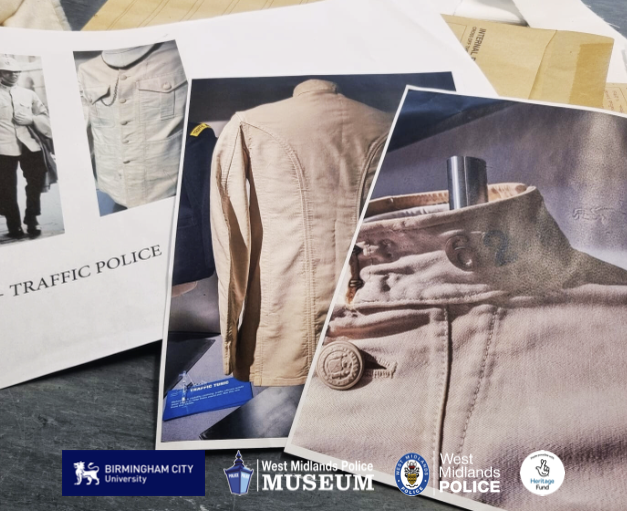
The Fashion Police project was born out of a conversation between West Midlands Police’s Heritage Manager Corinne Brazier and Professor Carlo Harvey, Director of Future Games and Graphics at Birmingham City University.
After initially meeting at a knife crime summit at BCU back in 2018, the two brought their organisations together for students on a collaborative practise module to develop interactive displays for the museum when it re-launched at the Lock-up in 2022.
Following the success of this collaboration, Corinne and Carlo discussed various potential future projects, settling on the Fashion Police as a way to bring together students from the School of Computing and also the School of Fashion, to help tell the stories of people behind the uniform. The goal of this project is to tell these stories in innovative and creative ways, to challenge perceptions of policing and help to build trust and confidence in the police.
A bid was developed to apply for £243,000 in National Lottery Heritage Funding via the Dynamic Collections funding stream. This was successful and we are incredibly grateful to the Heritage Fund and lottery players for their support in making this project possible.
Of the various outputs the project will deliver, arguably the Fashion Show is the most exciting. In a unique showcase of the work completed so far, we will bring together stories from the past 180 years of policing, to show how the uniforms have changed and who the people are behind the uniform.
Over the following pages, you can read more about the various elements of this innovative project, looking at how heritage can be a successful engagement asset. As the project progresses,
we will be looking to use the content we have developed to influence the perceptions held by young people about policing.
As an initial step in the project’s development, a comprehensive collection of reference materials was gathered, including;
Archival photographs and historical literature detailing the construction and standards of police uniforms across various time periods.
Interviews with former police officers who wore these uniforms providing valuable first-hand insights.
Photos, videos, and 3D scans of historical garments and accessories from museum collections were captured.
Discussions with museum stakeholders helped explore potential collaboration opportunities for the project.
This extensive data collection laid the groundwork for the next stages, which involved both digital and physical processes.
These included digital pattern cutting, modelling, and prototyping, alongside physical pattern cutting, tailoring, and the recreation of historical police uniforms. The project further expanded to the creation of digital assets for animation and VR/AR applications, website design, and the organisation of a fashion show and interactive exhibition.
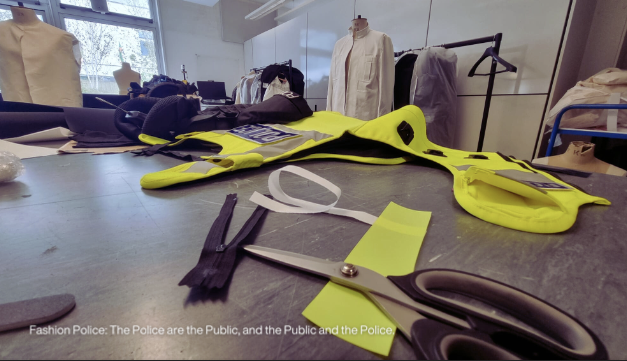

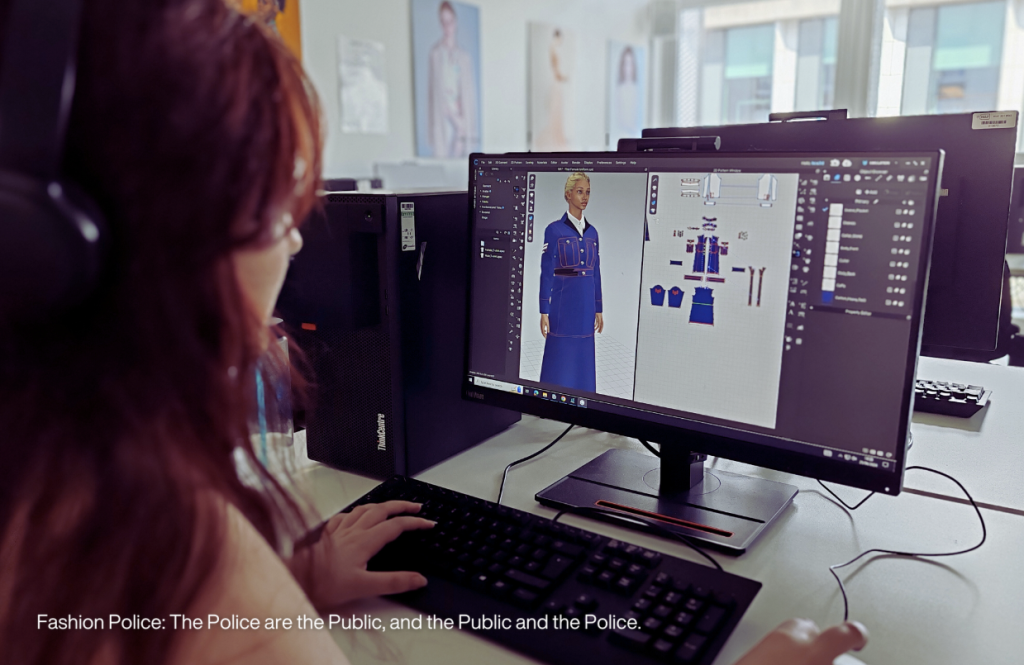
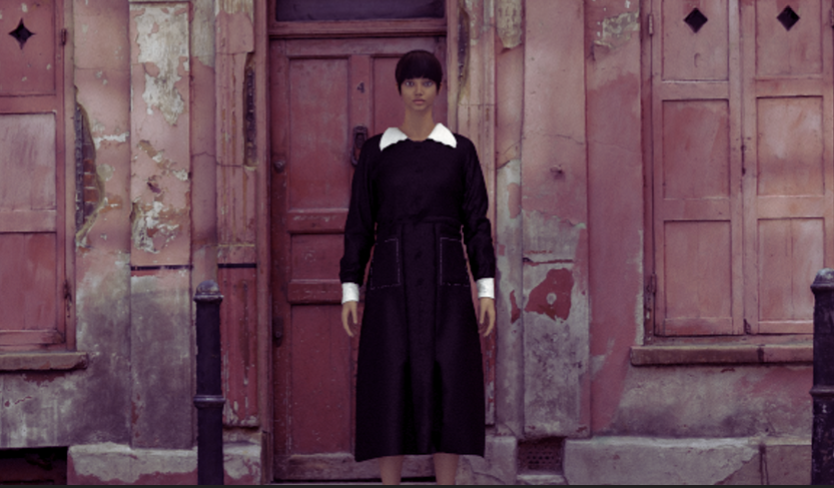
Using collected references and base pattern blocks, digital pattern-cutting prototypes were developed by students through CLO 3D software. This approach offered substantial benefits for the project, supporting two key areas of development.
First, it enabled physical garment construction by generating accurate, printable patterns, which were further refined in physical prototyping. Second, it facilitated the creation of digital twins, as these models could be exported as optimised FBX files for texturing, VR/AR optimisation, and animation.
Overall, 3D modelling through CLO 3D streamlines the design process by providing a virtual environment to test and adjust patterns, reducing the need for multiple physical prototypes and minimising material waste.
Moreover, 3D models allow for real-time collaboration and immediate feedback, enhancing the efficiency of the design workflow. This digital approach also opens up possibilities for immersive viewer experiences, as the 3D models created are easily adaptable for VR/AR applications, providing audiences with lifelike interactions in virtual environments.
Drawing from the extensive historical research and digital pattern development conducted throughout the project, students refined these patterns and began sampling fabric, prioritising sustainable production and minimising future fibre waste.
The garment construction phase focused on shaping and fitting the uniforms to conform to a standardised set of measurements. Once the fit was perfected, the patterns were finalised and prepared for garment construction. An ordered process was then established to guide the final stages of assembly.
To further reduce waste, students directly marked pattern pieces on the fabric using chalk, carefully cutting each piece to maintain accuracy in shape and size.
Using the industrial equipment at Birmingham City University, the students applied their skills to assemble the uniforms meticulously. Each step was thoughtfully executed, resulting in high-quality, expertly crafted uniforms that embody both historical authenticity and contemporary craftsmanship.
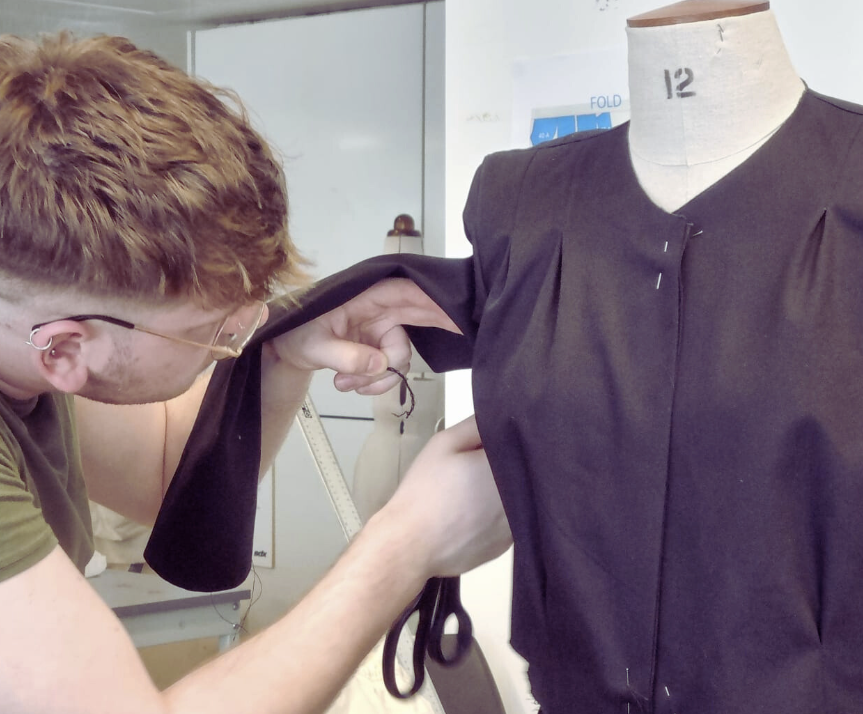
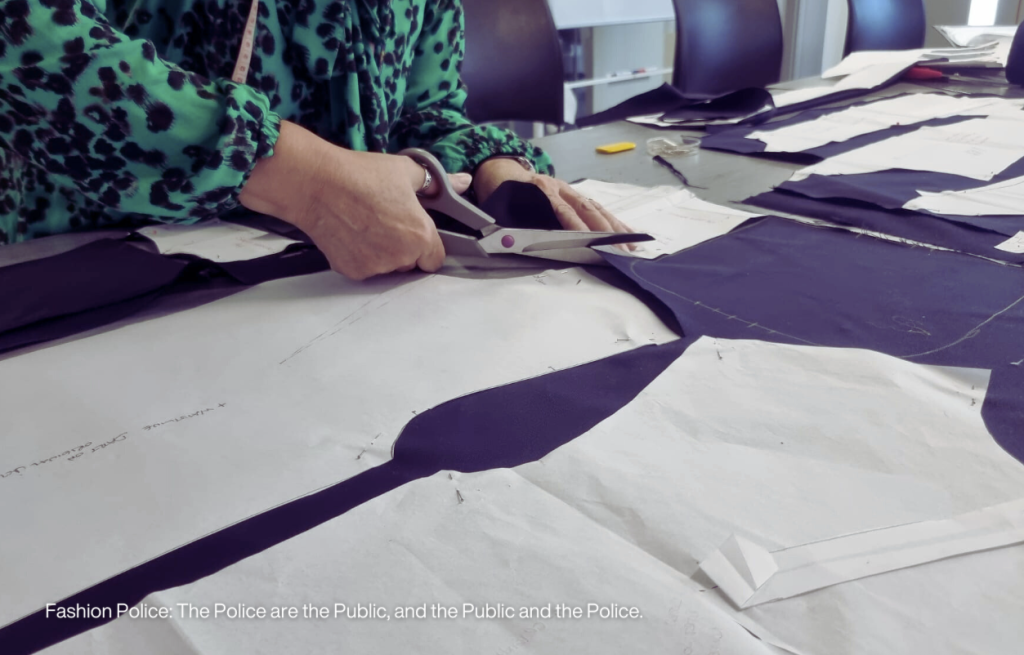
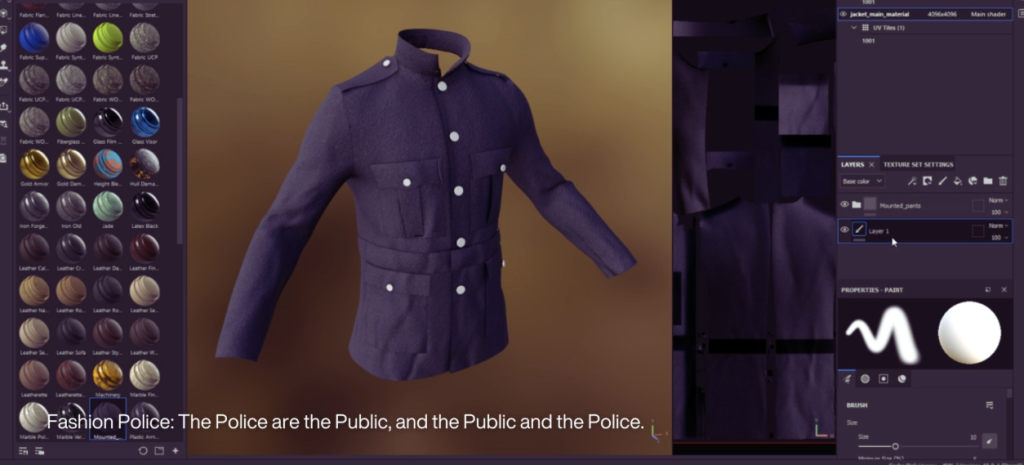
Digital twins offer a ground-breaking approach to preserving and sharing the rich history of police uniforms, making these artifacts accessible in ways that traditional exhibits cannot.
By creating a digital twin of the fashion show, we enable audiences to experience the evolution of these uniforms over two centuries, with each piece presented in stunning detail. Through interactive digital replicas, viewers can explore the intricate textures, construction techniques, and cultural context that shaped each era’s designs.
This virtual experience not only protects fragile historical garments from wear but also makes them accessible to a broader audience, allowing for an immersive and sustainable educational journey that celebrates the heritage and stories embedded in these uniforms.
Digital animation and motion capture allows us to bring police uniforms to life and show them in context, for example we used motion capture to record the hand signals a traffic officer would have use to direct traffic in 1960s, directly from someone that performed that role at the time.
We spent time texturing the uniforms and dressing them on photo realistic Meta Human characters in Unreal Engine, this allowed us to generate and see our uniforms on different characters, as well as apply captured performances and animate them.
These digital police uniforms not only act as a digital archive, but can be used in a variety of AR, VR, games and media projects that allow people to learn and experience policing from different eras.
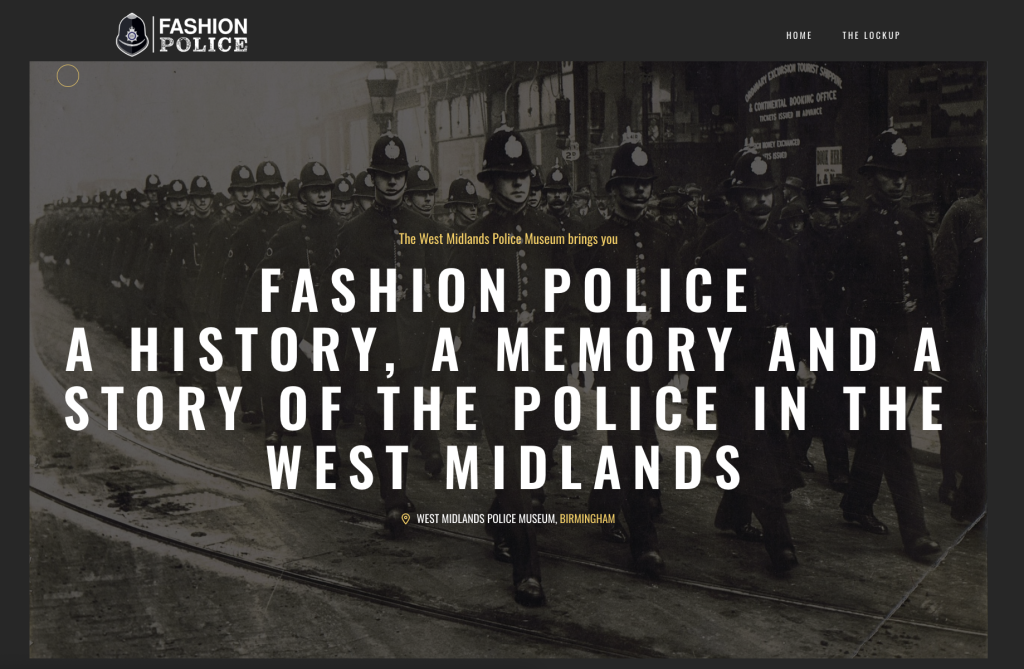
The project focuses on creating an engaging, user-friendly website that brings the history of UK police force uniforms to life for a diverse public audience. This innovative website blends traditional historical materials with cutting-edge web technology, transforming them into interactive, educational content that captivates and informs users of all ages.
The core challenge is to seamlessly integrate advanced technologies to present traditional materials in a fresh, appealing manner.
This collaborative effort between the Birmingham City University team and the Police Museum team—comprising museum documentary experts, academic staff, and PhD students—has amassed a rich array of multimedia content, including;
Advanced industry tools such as 3D lidar scanning, Maya, Unreal Engine, and fashion design software (CLO 3D) were utilised to ensure high-quality, web-compatible 3D displays. Moreover, with the use of modern web technologies, this rich multimedia content can be displayed and shared across different platforms at any time and anywhere.
The collaborative design process involved staff from Birmingham City University’s College of Jewellery, Fashion and Textiles and the Faculty of Computing, Engineering, and the Built Environment, to create a visually harmonious website that balances aesthetic appeal with rich historical content.
Emphasising accessibility and performance, the design ensures seamless viewing across multiple devices and platforms. This innovative digital platform not only modernises the presentation of historical artefacts but also enhances the audience’s understanding and appreciation of the evolution of police uniforms.